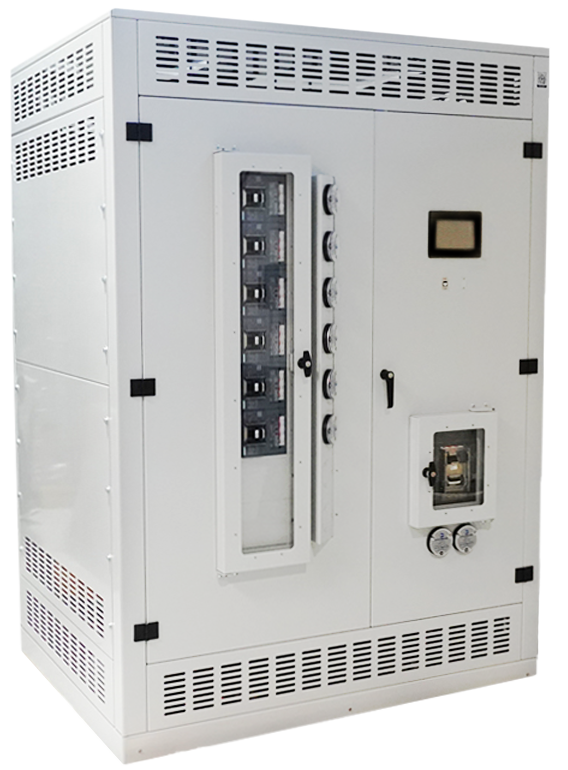Power infrastructure is the backbone of every data center. Without reliable, scalable, and safe power distribution, even the most advanced hardware can underperform or worse, fail entirely. Among the most critical pieces of this infrastructure is the Transformer PDU.
A Transformer PDU plays a dual role: it not only distributes power across your rack-mounted equipment, but also transforms voltage levels to match the needs of your hardware. This makes it an essential component, especially in environments where incoming power doesn’t match the voltage requirements of IT equipment.
In this guide, we’ll explore everything you need to know to choose the right Transformer PDU for your data center whether you're setting up a new rack, expanding your infrastructure, or upgrading outdated systems.
What Is a Transformer PDU?
A Transformer PDU (Power Distribution Unit) is a specialized PDU that includes a built-in electrical transformer. Its main purpose is to step up or step down the incoming voltage to the desired level before distributing it to the connected devices.
For example, if your data center receives 208V three-phase power, but your equipment requires 120V single-phase, a Transformer PDU converts the voltage accordingly and safely distributes it across multiple outlets.
These units are particularly useful in global facilities, colocation centers, industrial environments, and legacy systems where voltage mismatches are common.
Why Does Your Data Center Need a Transformer PDU?
Most standard PDUs assume your incoming voltage already matches your device requirements. But in many cases, that’s not true. Here’s why a Transformer PDU is often essential:
- Voltage Matching: Adapts power levels to your equipment.
- Simplifies Infrastructure: Eliminates the need for external transformers.
- Saves Space: Combines two essential functions (transformation + distribution) in one unit.
- Improves Safety: Provides better protection against overloads and voltage drops.
A transformer PDU ensures seamless compatibility between your power source and your IT load, reducing the risk of equipment failure and improving overall energy efficiency.
Key Factors to Consider When Choosing a Transformer PDU
1. Input and Output Voltage Requirements
Before selecting a Transformer PDU, identify the input voltage provided by your facility and the output voltage your equipment needs. Common transformations include:
- 208V → 120V
- 240V → 208V
- 415V → 240V or 120V
Make sure the PDU matches both the input and output voltages accurately. A mismatch here can lead to immediate equipment damage or inefficient operation.
2. Phase Type: Single-Phase vs. Three-Phase
Determine whether your facility uses single-phase or three-phase power:
- Single-phase: Common in smaller or legacy systems.
- Three-phase: More efficient and common in larger data centers.
3. Power Rating (kVA)
Transformer PDUs are rated in kVA (kilovolt-amperes). This rating determines how much load the unit can handle.
Estimate the total power requirement of the connected equipment and choose a PDU that can handle 20–30% more than that value to allow headroom for growth and avoid overloads.
4. Form Factor: Rackmount or Floor-Mount
Transformer PDUs come in different form factors based on available space:
- Rackmount PDUs: Fit into standard server racks (usually 2U–5U). Good for compact data centers.
- Floor-mount PDUs: Standalone units ideal for high-capacity or centralized power distribution.
5. Outlet Types and Quantity
Match the PDU’s outlet types (NEMA, IEC, etc.) to the power plugs on your servers, switches, and other hardware. Some Transformer PDUs offer a mix of outlet types for greater compatibility.
Also, make sure you have enough outlets for current devices, plus a few extras for future expansion.
6. Monitoring and Smart Features
Modern Transformer PDUs often come with intelligent features, such as:
- Remote monitoring
- Real-time power metering
- Environmental sensors (temperature/humidity)
- Alert notifications (email/SMS)
- Outlet-level switching and control
7. Compliance and Certifications
Ensure the Transformer PDU meets necessary safety and industry standards, such as:
- UL (Underwriters Laboratories)
- CE (European Conformity)
- RoHS (Restriction of Hazardous Substances)
- ISO/IEC standards for data center equipment
Certifications provide peace of mind and may be required for insurance or regulatory compliance.
8. Cooling and Ventilation
Transformers generate heat. Make sure the unit includes proper cooling features like built-in fans, vented enclosures, or thermal sensors.
In high-density environments, transformer overheating can affect overall data center temperature, so heat management is crucial.
Installation Tips
- Plan ahead for cable routing, airflow, and access.
- Label all power circuits clearly.
- Test voltage levels before connecting critical hardware.
- Secure mounting is essential to avoid vibration damage in transformer-equipped units.
- Work with a certified electrician or data center technician for installation if you're handling high-voltage equipment.
Final Thoughts
Choosing the right Transformer PDU for your data center isn’t just about matching plugs and voltages. It’s about building a reliable, safe, and scalable power ecosystem that supports uptime, efficiency, and growth.
By carefully considering voltage compatibility, capacity, smart features, and form factor, you can select a Transformer PDU that aligns perfectly with your technical and operational needs.
Whether you're upgrading a single rack or powering an entire row of servers, the right Transformer PDU is a smart investment in your data center’s future.

